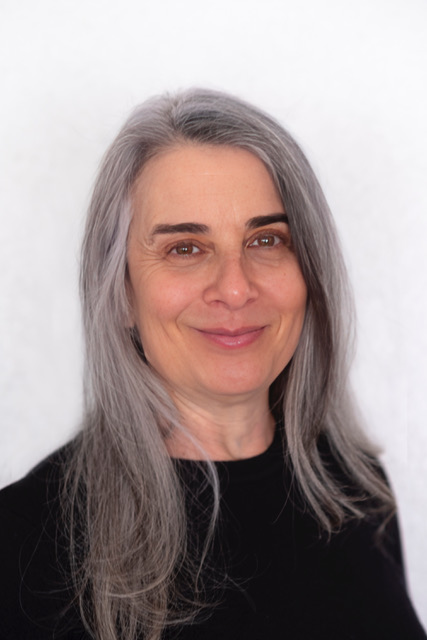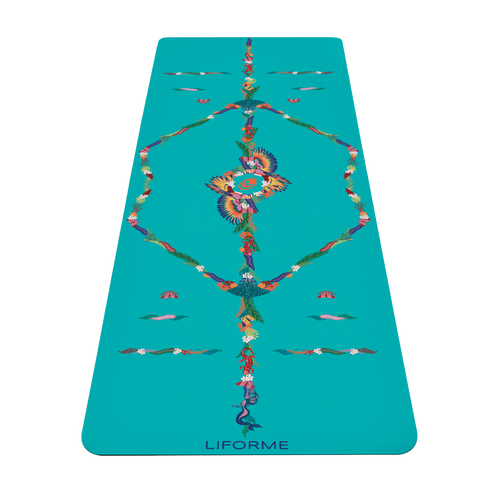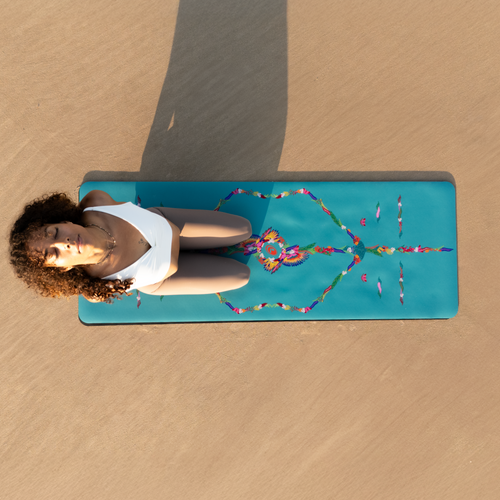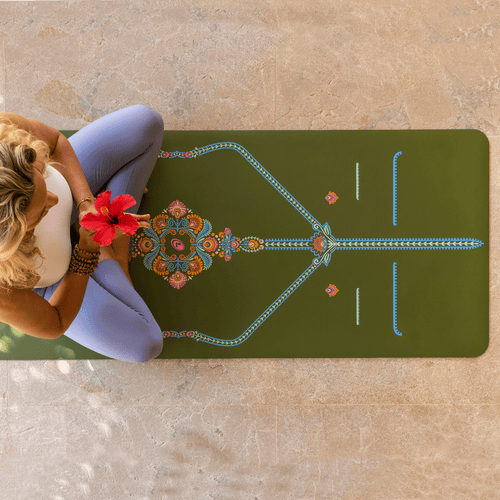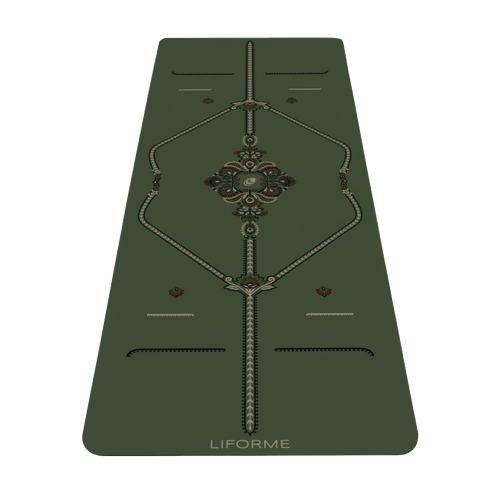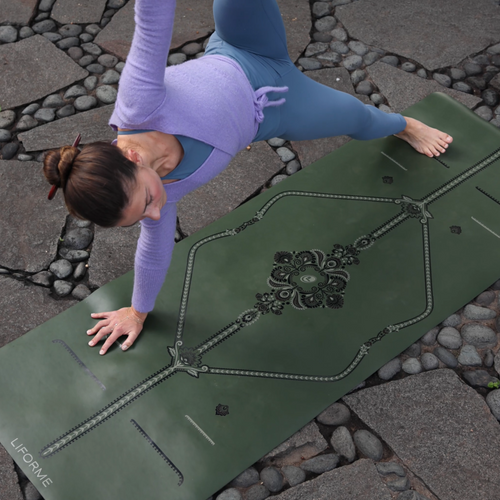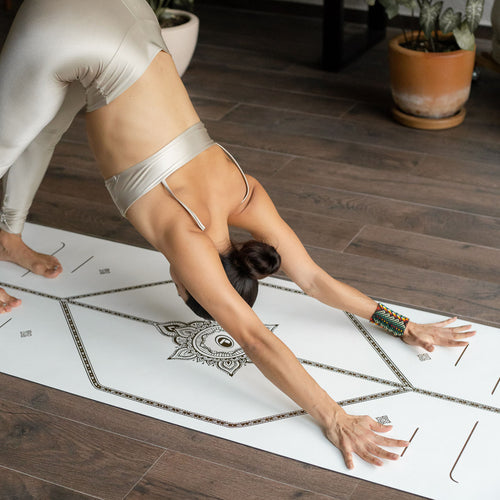Vinyasa 3 Ways
In contemporary yoga, ‘vinyasa’ has three primary meanings:
1. Vinyasa Yoga: Describes any flowing style of practice in which movement is synchronized with breath. Also called Flow Yoga.
Example: I’m going to take a Vinyasa class this afternoon with my favourite teacher.
2. A Vinyasa: A sequence of poses in which each movement is done on an inhalation or exhalation of breath. A Cat-Cow Stretch is an example of a very simple vinyasa because the spine is arched on an inhale and rounded on an exhale. A Sun Salutation is a more complex vinyasa, but the same principle applies. Each movement is done in conjunction with either an inhale or an exhale.
3. The Vinyasa Sequence: A specific sequence of poses that acts as a link between series of postures in flow practices. The poses are: Plank, Chaturanga Dandasana, Upward Facing Dog, and Downward Facing Dog.
Example: Go through your vinyasa at your own pace and we’ll all meet in Downward Dog.
Let’s zoom in for a closer look at the origins of Vinyasa Yoga. Then we’ll go through the vinyasa sequence step-by-step with an eye toward optimal, safe alignment for repetitive movements over time.
The Origins of Vinyasa Yoga
In the 1930s T. Krishnamacharya, often considered to be the father of modern yoga, developed a flowing style of practice in which movement through sequences of poses was connected to inhalations and exhalations of breath. He referred to “the repetitive linking sequences in his system as vinyasas,” according to Elliott Goldberg’s 2016 book, The Path of Modern Yoga.
Sanskrit scholar N. Sjomen, whose The Yoga Tradition of the Mysore Palace covers the origins of Krishnamacharya’s method, explains that “vinyasa is a term used in vedic ritual and refers to the subsidiary factors around a mantra that are required to make the mantra effective.” The Vedas are a group of ancient Indian religious texts and associated practices. Krishnamacharya may have seen a parallel between the supporting role of vinyasas in traditional mantra practices and in his recently synthesized flowing system of asanas.
Although Krishnamacharya did not refer to his method as Vinyasa Yoga, the term was applied to his student K. Pattabhi Jois’s Ashtanga Yoga, which was heavily based on Krishnamacharya’s teaching. Ashtanga, in turn, inspired the next generation of flowing styles, which today live under the Vinyasa umbrella. These include Power Yoga, Jivamukti, Rocket, and many others simply called ‘Flow’.
The Vinyasa Sequence
In flow classes, you go through the vinyasa sequence of poses (Plank to Chaturanga to Upward Facing Dog to Downward Facing Dog) many times. That repetition can make it easy to space out, rely on old habits, and disconnect from your body. Instead, try to bring your attention to every movement in this series every time. The transitions from pose to pose are particularly important here because they set up the good alignment that is necessary to do these tricky poses frequently over time with less risk of injury.

1. Begin in Plank Pose (Phalakasana)
- You can arrive in Plank in several ways, including stepping or jumping back from the front of your mat or coming forward from Downward Facing Dog.
- Establish Plank position with your shoulders over your wrists.

2. Shift Forward
- In Plank, your shoulders are over your wrists. Before you lower to Chaturanga Dandasana, you need to position your shoulders slightly in front of your wrists.
- This set-up allows your upper and lower arms to form the optimal right angle when you are in Chaturanga.
- To this end, come up onto your tiptoes and shift your shoulders forward.
- Open your chest by anchoring your shoulder blades onto your back. Your gaze will naturally lift a little.

3. Lower to Four-Limbed Staff Pose (Chaturanga Dandasana)
- On an exhalation, bend your elbows straight back, hugging your sides, to lower your body
- Stop when your upper arms are parallel to the floor. Don’t go any lower.
- It’s fine to lower your knees to the mat or to keep your shoulders above the level of your elbows if that’s what works in your body.
- Pause for a moment in your Chaturanga. There’s a tendency to whip through this transition. Take it slowly instead.

4. Lift to Upward Facing Dog (Urdhva Mukha Svanasana)
- Inhale to roll or flip to the tops of your feet. Rolling looks cool, but it can cause your shoulders to come too far in front of your wrists. Flipping your feet one at a time helps align your shoulders over your wrists.
- Lift your chest by beginning to straighten your arms, but don’t be in a hurry to get there. With your elbows bent, move your shoulders back and down away from your ears.
- It’s ok to keep your elbows slightly bent throughout your Upward Facing Dog if it allows you to keep your shoulders low and your chest open.
- Press into the tops of your feet and engage your leg muscles to keep your thighs lifted off the floor.

5. Move Back to Downward Facing Dog (Adho Mukha Svanasana)
- Exhale and roll or flip the feet as you lift your hips back to a Downward Facing Dog.
Vinyasa Tips for Beginners
Chaturanga Alternatives
- As an alternative to Chaturnaga, release your knees to the floor in Plank before lowering to Chaturanga. Keep your back flat.

- Knees, Chest, Chin Pose (Ashtanga Namaskara) is another variation. As the name indicates, from Plank lower your knees, chest, and chin to the floor by bending your elbows straight back. Your butt stays high.
2. Upward Facing Dog Alternatives

- Try Low or High Cobra (Bhujangasana). For Low Cobra, lift your chest away from the floor without pressing into your hands. This is great for strengthening your back muscles.

- High Cobra is more like Upward Facing Dog in that your press into your hands and straighten your arms to lift your chest, but your thighs stay on the floor.
Go With the Flow
Being able to handle change, respond to challenges with equanimity, and keep calm are big goals. Experiencing Vinyasa Yoga in your body through breath and movement helps your mind better manage life’s inevitable fluctuations. By flowing, we learn to go with the flow.
Sources:
Goldberg, Elliott. The Path of Moden Yoga. Inner Traditions, 2016.
Sjoman, N.E. The Yoga Tradition of the Mysore Palace. Abhinav Publications, 1996.


